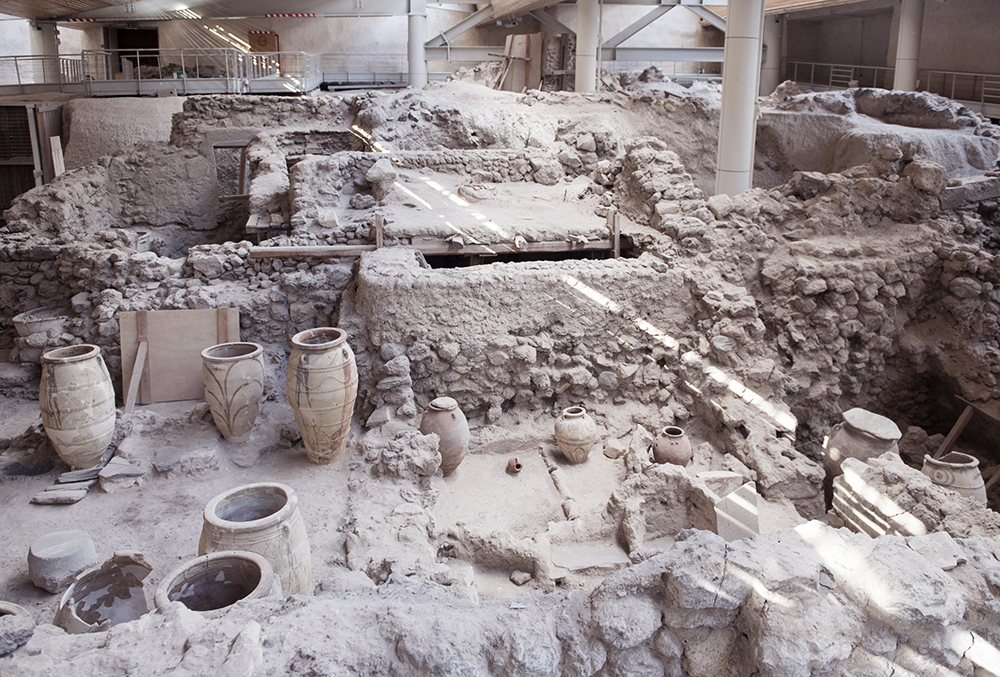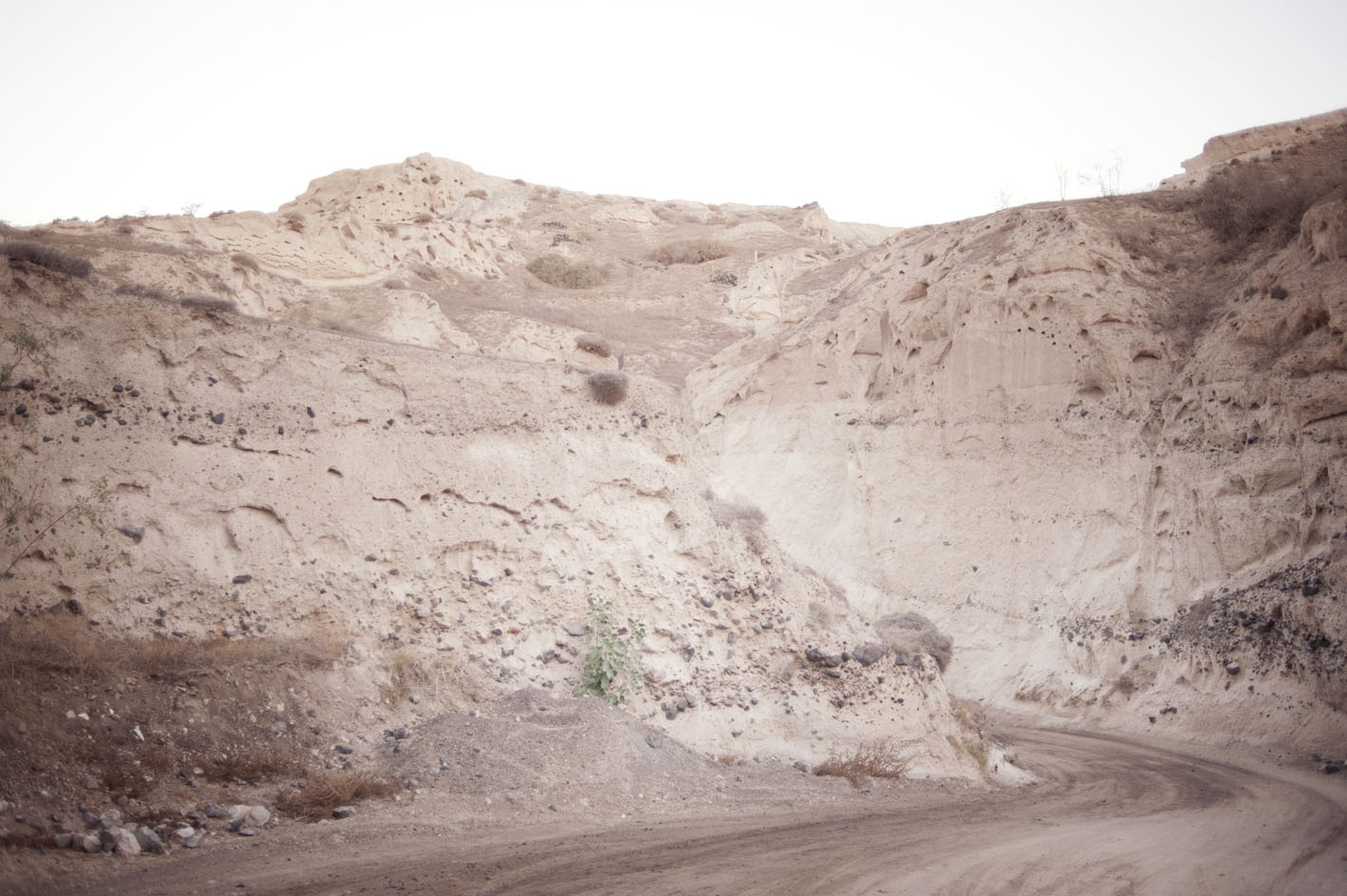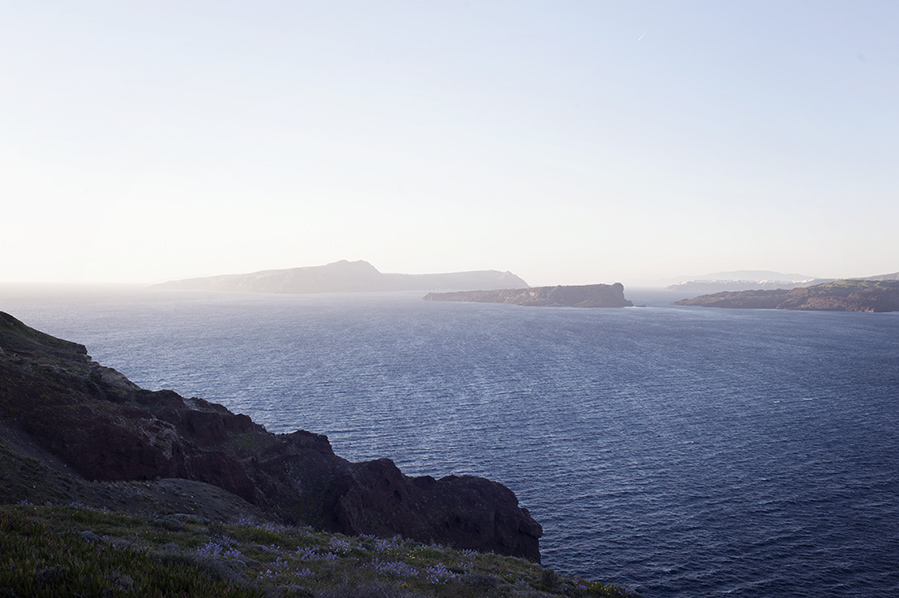The Archeological Site of Akrotiri is something you should visit in winter, in spring, in summer and even in autumn, on a sunny or rainy day. In my opinion, you should think about it like the Acropolis in Athens, you would not go to the Greek capital without paying a visit to the Parthenon, would you?
We are talking about a site which is one of the most important prehistoric settlements of the Aegean and not only. The Akrotiri Archeological site was inhabited since the Neolithic Age. At that time the location was the perfect one to provide a safe refuge for the vessels, that is why it became an important harbour town involved in the maritime trade which expanded far beyond the Aegean, going towards the East Mediterannean. For this reason, the town was very cosmopolitan, its inhabitants had many relations with other cultures.
The Akrotiri excavations are also known as the Pompei of the Aegean, the connection which relates the two towns is that they both disappeared due to a volcanic eruption (the Minoan Eruption, 1613BC) and that they were both found centuries after almost untouched.
The only difference is that in the Akrotiri ruins no human remains were found, mainly only objects and jars. This is quite fascinating but might have an easy explanation: the town might have been abandoned by the time of the Minoan eruption. Probably many earthquakes announced the upcoming eruptions and the inhabitants already had this notion: they might have escaped long before the tragedy, taking with them the most valuable and easy to carry belongings.
The credit of the discovery goes to Professor Spyridon Marinatos. The identification was somehow facilitated by the fact that part of the town was located in a gully and every time it rained the water washed away part of the ash in the area and at some point part of the site was visible. The Akrotiri excavations began in 1967.
Professor Christos Dumas collaborated with Professor Marinatos and later took over him in 1975.
Discoveries came up from the very first days and nowadays, and after more than fifty years of research, only a very small percentage of the town has been uncovered. Just to get an idea, over thirty buildings have been located in the Akrotiri Archeological Site but only four of those have been fully brought to light. It is a really hard job as the site is preserved as it was at the time of the explosion of the volcano, meaning ash is everywhere.
Currently, you can walk around the buildings and get an idea of how Akrotiri looked like, the houses are 2 or 3 floors tall and we are talking about a site 1700 years older than Pompei! You can also admire large storage jars. An impressive number of pottery and objects of stone were found. The jars and pottery are finely painted with marine scenes and nature motif (flowers, birds).
The Akrotiri ruins prove that its civilization had high-level specific technical knowledge.
The buildings were provided with a hygienic draining system which reveals once again the prosperity and advanced level of the population.
Beautiful wall paintings, well preserved, were found in the houses which give us a lot of information about the Aegean life at that time and that are the example of the beginning of the grandeur of the European painting.
The painting and the exquisite objects suggest that it was a rich and cultured society.
How can it be possible so many years ago? Very often we think that islanders are narrow-minded people, because of the isolation occurred by the sea.
That is not always true. And the site of Akrotiri is the perfect example. Yes, there was segregation and self-sufficiency because of the sea. But, the deficiency of natural resources of the Cyclades and, on the other side, the uniqueness of their materia prima, pushed their inhabitants to explore other places, that is why they always had a predominant role in the trade and in humanism: the sea can also be a way to communicate and interconnect with other cultures.
If you are interested in Archeology see also my post about the Ancient Thera
Open every day, closed on Tuesdays. 8.30-15.30 (winter time)
Admission fee: 6 euro





